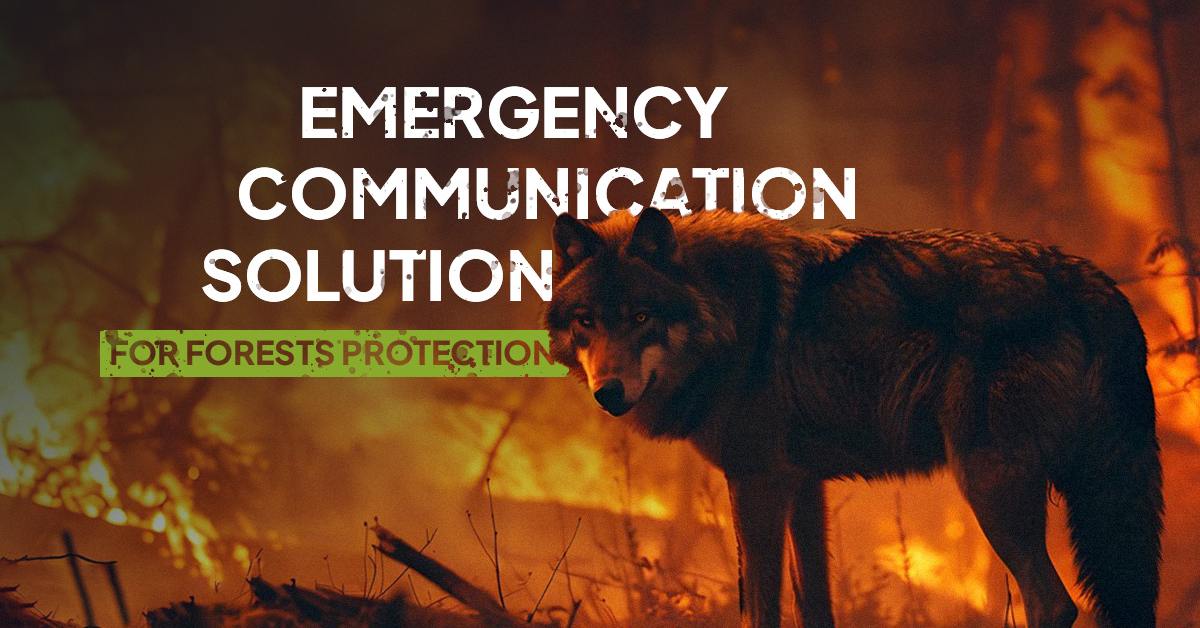How Ad-hoc Networks Help with Wildfire Control?
Mission Critical

Forest fire prevention has become increasingly critical as wildfires threaten ecosystems worldwide. Each year, forest fires cause more than $5 billion in economic losses. Beyond the financial toll, these fires lead to the destruction of habitats, countless animal deaths, and long-term ecological damage. Firefighters are on the front lines, and their work is crucial in protecting forests. To enhance coordination, safety, and effectiveness, a reliable communication network is essential.
Challenges Faced by Forest Firefighters in Communication
Forest firefighters often face significant communication challenges, especially in remote or mountainous areas where public cellular network coverage is lacking. Imagine a team deep in a dense forest, surrounded by rugged terrain and towering trees. The landscape creates blind spots where conventional communication tools fail, leaving rangers and firefighters vulnerable during routine patrols and emergency response. When a fire breaks out, the lack of public network coverage can make communication nearly impossible, leading to delays in reporting critical information, coordinating rescue efforts, and ensuring personnel safety. This is where on-site ad-hoc networks become crucial.
Hytera's emergency communication solution is designed to tackle these challenges head-on. Here are the key components:
On-site Ad-hoc Network. In high-risk fire zones, communication is the lifeline for firefighters. Picture a rapidly spreading wildfire threatening to engulf a vast area of forest. Hytera's E-pack200 DMR Ad-hoc Dual-channel Portable Repeater leverages wireless interconnection technology to quickly deploy a large area voice communication network without the need of traditional infrastructure like IP cables, microwaves, or optical fiber. This setup allows for precise coordination between multiple teams, often spread across different locations, ensuring that commands and updates are transferred quickly and accurately, enabling effective teamwork and resource deployment.
Portable and Rapidly Deployable Repeater. Forest fires can cover vast areas, requiring a large-scale response. Imagine a scenario where firefighters need to cover miles of burning forest. Ad-hoc equipment like Hytera's portable repeater can be scaled up quickly to support a growing number of teams and resources, providing the necessary infrastructure to manage complex operations. Hytera's ad-hoc network equipment is lightweight, weighing just 3.1 kg, making it easy for firefighters to carry through the forest. It can also be installed on vehicles, supporting mobile command operations and significantly enhancing overall mobility and rescue efficiency. This equipment is built to withstand harsh conditions, such as heat, smoke, and rain drop, ensuring that it continues to function even in the most challenging environments.
Diversified Devices for Data Transmission. The vastness of forest areas often leads to challenges like missed locations, incorrect routes, and even the displacement of firefighters. Hytera's diverse range of devices—including dual-mode rugged radios, two-way radios, and PoC radios—helps tackle these issues by collecting essential data such as location, online connectivity, communication status, and on-site multimedia. Built specifically for harsh environments, Hytera's two-way radios ensure reliable performance in challenging conditions. PoC radios, when cellular networks are available, offer a broad communication range and features like GPS tracking, further enhancing operational effectiveness.
How Hytera Ad-hoc Networks Help Protect Forests?
In the event of a forest fire, communication challenges escalate. The intense and dangerous nature of forest fires, coupled with a lack of public network coverage in mountainous areas, demands a robust communication network. Hytera's solution tackles this by deploying the E-pack200 DMR Ad-hoc Dual-channel Portable Repeater for on-site voice communication and iMesh Broadband Mesh Portable Equipment for extended coverage through multi-hop relay. High-altitude points are equipped with relay stations, and drones with relay devices are deployed to further extend the emergency network's coverage.
Firefighters are equipped with multi-mode terminals and two-way radios for audio and video communication. These devices connect to the on-site ad-hoc network, allowing real-time data from the front lines to be transmitted to the field command center. The data is then relayed via satellite links or 4G/5G networks to the remote command center for analysis and decision-making, providing accurate information to support firefighting efforts.





